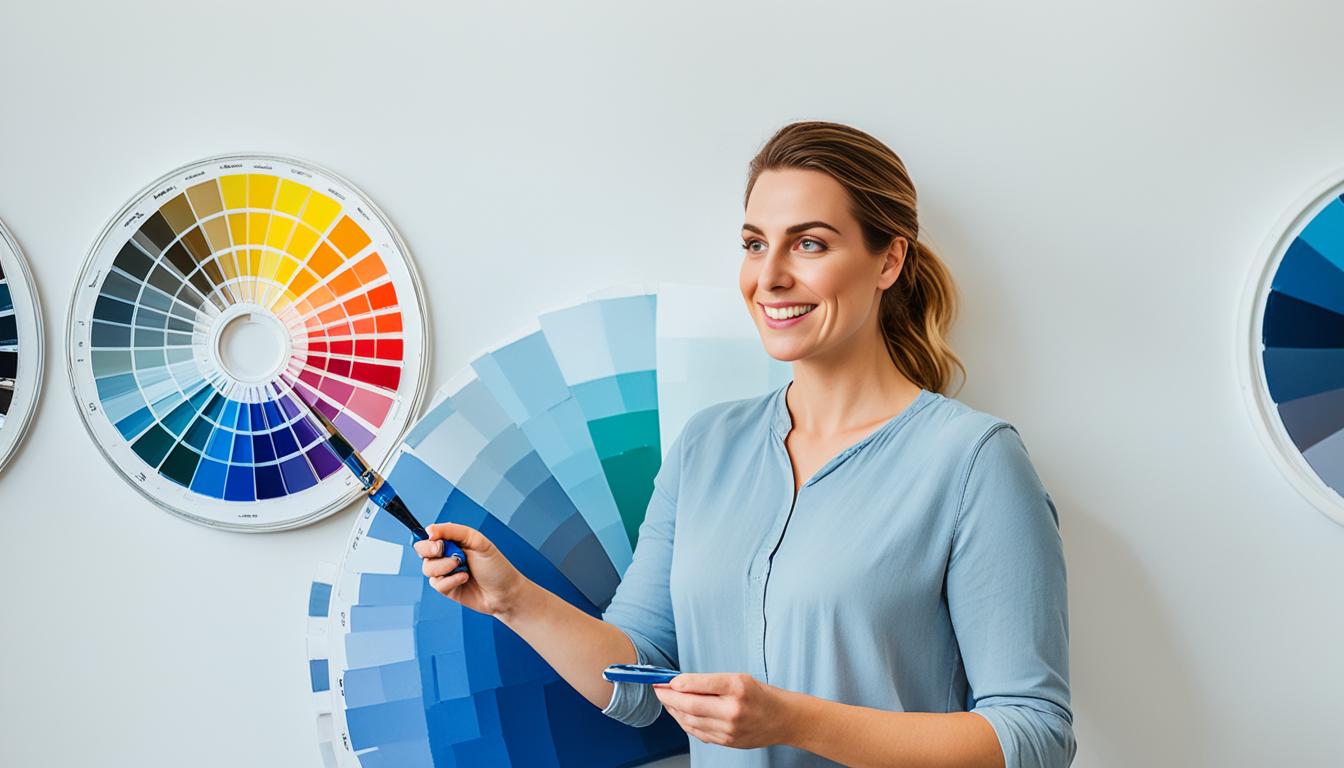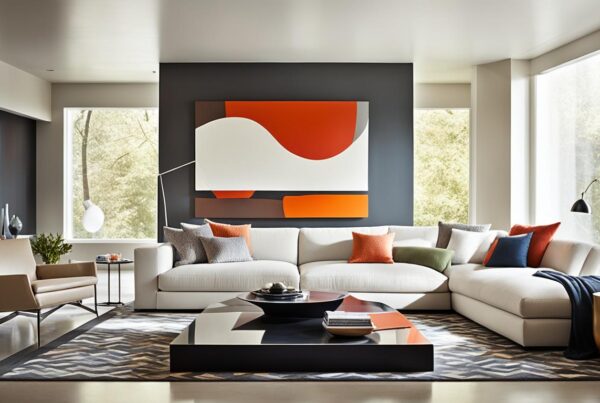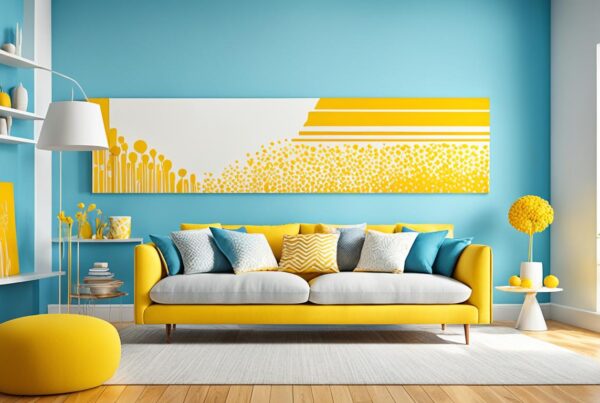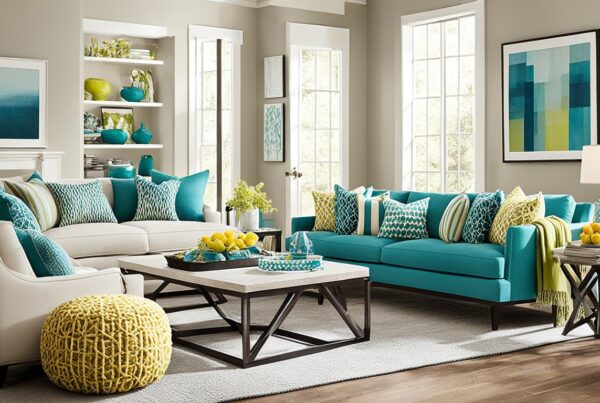Welcome to your new home! Feeling the excitement of moving in is natural. You may want to start decorating right away. As a Pro Painters expert in Salt Lake City, I can guide you. We’ll dive into selecting perfect new home interior painting colors together. Choosing the right shades greatly impacts your home’s feel. No worries, though. I will help you with color matching and finding paint color inspiration.
Your home is a special place, and wall colors add to its charm. Each room’s color sets its mood. From the bedroom’s peace to the kitchen’s energy, and the bathroom’s serenity. Picking the right paint colors is key. I’m here to make finding these colors fun and exciting.
Next, I’ll share tips and advice. They will help you avoid mistakes and find colors that match your dream home vision.
Key Takeaways
- Taking time to pick paint colors makes your home a joyful place.
- Colors influence your home’s mood. Think about the feelings you want to create.
- Match colors with your home decor for a consistent look.
- Use professional advice or paint color inspiration tools for help.
- Consider how colors look in your space and with natural light for the best effect.
- The best paint color reflects your style and fits your home’s design.
Avoiding Common Color Selection Mistakes
When you start improving your home, a big mistake is picking paint too soon. People often choose a wall color without thinking about their furniture, art, and decor. This can limit how creative and flexible the design is.
Another mistake is just using color swatches from the store. These samples can look different at home because of the lighting. Also, painting swatches on walls with different colors can trick your eyes. This makes the real color hard to see.
“To get a true sense of how paint colors will appear in your home, always test swatches directly on the walls, in various lighting conditions, at different times of the day.” — Expert Advice
To avoid these problems, plan your paint color carefully. Think about how it will look with both the room’s light and its stuff. Putting the color and room elements together early makes the design work better.
- Start with a broad concept of your room’s design, including furniture and art.
- Collect color swatches and apply them to various sections of the room.
- Observe these swatches under different lighting conditions throughout the day to see how they adapt.
Avoiding these traps helps your home look better. Your colors will make the space feel nicer, not worse. Remember, improving your home should always make it better.
Starting Your Color Journey: Finding Inspiration
Going on a color adventure in your home means more than liking colors. It’s about making a story with colors. This story should make your place beautiful and work well. Home decor inspiration can come from many places. Choosing the right source is key to harmony.
Pick an inspiration piece that speaks to you. It could be a bright art piece, a cozy rug, or some fancy throw pillows. Such items have many colors. They offer a wide range of paint color inspiration.
A colorful painting can be a central piece. It can guide the color scheme of the room. It helps in color matching the room’s elements.
Take your chosen item to a paint store. Explore each color. Play with shades to match your decor item. This ensures the paint matches the beauty of your inspiration.
I’m going to share a list of inspiration sources. See how they can inspire your room’s colors:
- Artwork: Use primary and secondary colors. Great for statement walls.
- Rugs: They offer many colors. Useful for finding subtle room colors.
- Fabrics: Patterns can inspire decor accents or furniture.
Your goal is to make a space that shows your style. It should feel connected and well-thought-out. Choosing based on an inspiration item makes your space feel special. It’s a mix of art and skill in making your home.
Psychology Behind the Perfect Paint Colors
When we pick colors for our spaces, color psychology plays a big role. It affects the emotional impact of colors in our homes. Knowing how colors change the room mood helps us choose better. We use color theory to find colors that make us feel good.
Choosing a paint color means thinking about the mood you want. Do you want calm or energy? The colors you pick can change feelings and thoughts a lot. For instance, bright greens make kitchens lively, while soft blues make bedrooms peaceful. This is the power of the emotional impact of colors.
Colors are not just for looks; they affect our feelings. Here’s a simple guide to how colors change room vibes:
- Reds are exciting and great for places where people hang out together.
- Blues are calming, perfect for bedrooms or bathrooms for chill times.
- Yellows make places happy and full of energy, good for kitchens.
- Greens mix calm and cheer, working well in many spaces.
Using social media and digital tools to preview paint helps a lot. Trying different shades to see their effect is smart. But remember, these tools help, not decide for you. When you mix color theory, color psychology, and room mood thoughts, you pick colors that feel just right.
Interior Painting: The Impact of Undertones and Lighting
Knowing about paint undertones changes how we see our rooms. These hidden colors can make a big difference. In my own painting projects, I’ve learned warm colors have hints of orange, yellow, or red. They make a place feel cozy. Cool colors, however, have blue, green, or purple hints. They bring calmness. To find the real undertone, look at the darkest color on the swatch.
The color temperature also plays a big role. It’s not just about picking between warm or cool colors. It’s about how light affects these colors. I’ve learned to watch how lights change colors during the day. Daylight shows more blue. Warm lights bring out yellow. This is why testing paint in your own light is key. It helps pick the right color.
Don’t overlook how room lighting effects play with your color choice. Put paint on white card stock. Then see it in your room’s light. This test shows if the paint keeps its true color and mood. With these painting tips, you’re ready to make a space that’s truly yours. Just one brushstroke after another.
FAQ
How do I begin selecting paint colors for my new home interior painting?
Start by finding something that inspires you. Like artwork, a rug, or decor you love. It sets the tone for your home’s colors.
What are some common interior design mistakes to avoid during paint color selection?
Don’t pick a paint color too early. It might limit your choices later. Don’t trust swatches alone without seeing them on your walls.
Why is it important to consider the emotional impact of colors when selecting room colors?
Colors change how we feel. For example, some bring calmness, energy, or comfort. Think about the mood you want before choosing.
How can I ensure the paint color I choose matches the rest of my home decor?
Use color matching at paint stores with your inspiration item. Understanding color theory also ensures colors match well in your space.
What role do paint undertones play in interior painting?
Undertones change how your wall looks. Warm ones make spaces cozy. Cool ones feel open and serene. Knowing them is key.
How does room lighting affect paint colors?
Light changes paint color looks. Daylight shows the true color. Artificial light affects undertones. Test samples in different lights to see.
Can you explain the difference between color temperature and undertones in paint?
Yes! Color temperature is about warm or cool colors. Undertones are hidden colors. For instance, beige might look warm with a yellow undertone.
Are there tools to help visualize paint colors before making a decision?
Yes! Use paint brand apps to try colors in your room virtually. Check social media and search engines for real-life color examples.
What is the best practice for testing paint colors in my home?
Test colors on big white card stocks. Move them around to see the color in different lights and settings.
How does color theory impact my choice of paint colors for home improvement?
Color theory shows how colors work together. It helps you pick colors that look good and make your home feel right.




